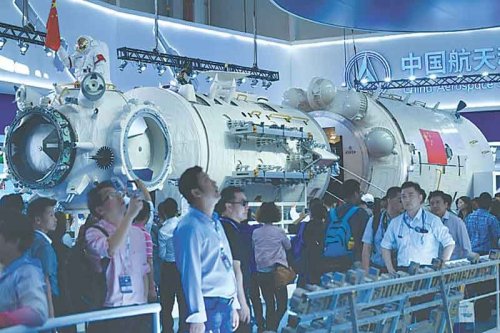China will next year start launching a series of satellites to track water conditions and traffic, and reinforce “national sovereignty” throughout the South China Sea, according to state media.
In all, six optical satellites, two hyperspectral satellites and two radar satellites will keep a real-time daily watch on the contested waters and monitor key areas several times a day as part of the Hainan satellite constellation system, China News Service reported on Monday.
Yang Tianliang, director of the academy’s Sanya Institute of Remote Sensing, said the network would enable authorities based in Hainan to speed up their response to emergencies, more effectively administer the South China Sea, and improve exploration and development of the resource-rich waters.
“Each reef and island as well as each vessel in the South China Sea will be under the watch of the ‘space eyes’,” Yang said. “The system will [reinforce] national sovereignty, protection of fisheries, and marine search and rescue.”
The programme is being carried out by the Chinese Academy of Sciences and is expected to be completed by 2021.
In the programme’s first phase, three of the optical satellites will be launched in the second half of next year. They will be equipped with optical remote sensors, a system to identify ships and cameras designed to monitor the ocean’s surface.
The network’s initial priority was to cover all of the South China, Sea so the cameras in the first three satellites will be strong enough only to focus on large and mid-sized vessels, the report said.
The two hyperspectral satellites to be launched in the second phase in 2020 will be able to assess water conditions, while the synthetic aperture radar satellites to be sent into orbit in the third phase will be able to provide all-weather, high-definition monitoring.
Yang said that when the network is completed, it will cover the entire area between the 30th north and south parallels, and could offer “seamless monitoring and receiving system” of tropical regions.
“This is will cover most of the Maritime Silk Road area,” he said when the programme was launched in December.
The oil and resource-rich waters of the South China Sea are claimed by China, the Philippines, Brunei, Vietnam, Malaysia and Taiwan.
Tensions have risen in the area with China’s construction of artificial islands equipped with military facilities, and the deployment of military vessels by other claimants and the United States.












